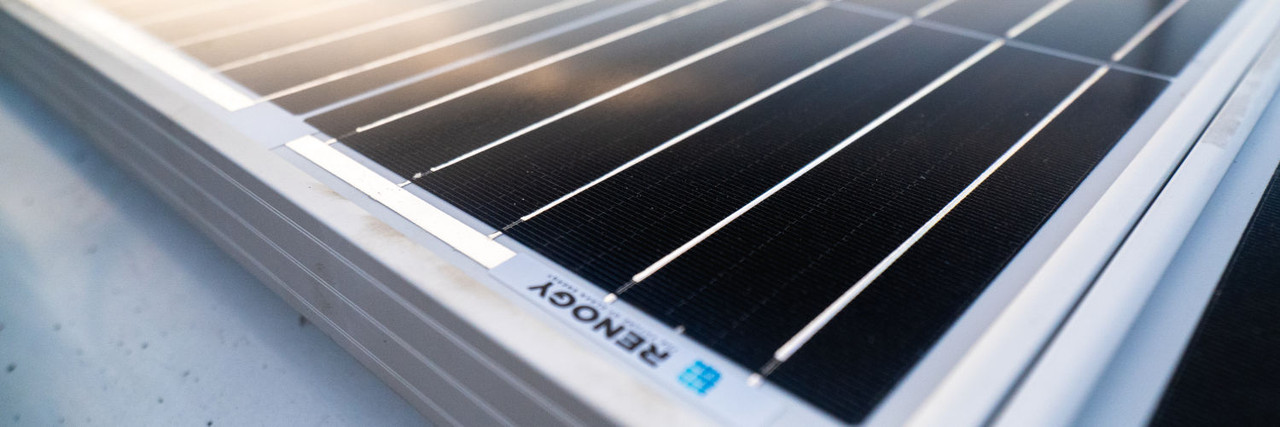Solar Panel Efficiency In Australia: Complete Guide
Solar Panel Efficiency In Australia: Complete Guide
According to Geoscience Australia, the Australian government’s official source for solar energy data, the continent of Australia receives 50 million petajoules of solar-based radiation over the course of one year – an amount that is over 10,000 times the energy consumption demands of the entire country.
Despite these impressive statistics, the solar energy market is one of Australia’s fastest-growing industries, but solar power still only accounts for 0.1% of the country’s total energy consumption. However, with an increase in government-sponsored rebate programs and the continued innovations of the solar industry, solar power usage in Australia is expected to keep increasing well into the future. This begs the question – how efficient are solar panels? And what is energy efficiency? Below we cover everything related to solar panel efficiency levels in Australia, how solar energy works, and other important topics.
What Is Solar Panel Efficiency?
The efficiency of solar panels is a hot-button topic, and depending on where you look online the information might seem conflicting at first look. Just how efficient is solar energy? Some sources say that solar panels are not efficient, and others state that they are extremely efficient – what gives? The fact of the matter is that solar panel systems, when compared to other energy production methods, have a low level of energy conversion efficiency.
What this means is that 100% of the energy collected via solar panels is not actually convertible into usable energy for your home, business, or property. With that being said, energy conversion efficiency isn’t really a problem considering the fact that sunlight is a free energy source. This, coupled with the fact that modern solar panels, especially monocrystalline panels, have come a very long way in terms of energy efficiency, translates to solar’s energy conversion efficiency not being the problem that it might appear to be upon first glance. Now, let’s dive into the nitty-gritty of solar efficiency and why solar panels areenergy efficient.
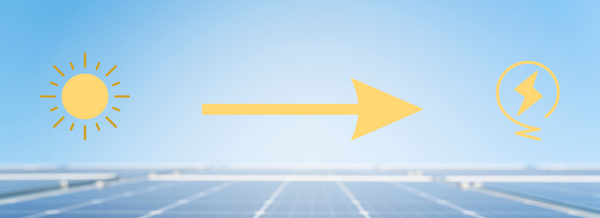
What Is Module Efficiency?
Solar module efficiency refers to the amount of solar power that your system’s panels can actively convert into usable energy. If your solar panels have a higher module efficiency rating, that means they can convert a bigger percentage of the sun’s rays into power for your home or property. What this also means, is that if you purchase efficient solar panels with a high module rating, you won’t need to use as many solar panels compared to if your system had a lower efficiency rating.
For example, a high-quality monocrystalline solar panel will be able to convert 15% to 24% of the PV rays it absorbs into usable energy. Other panel types, such as thin-film panels, can only convert 6% to 12%. If your system uses polycrystalline solar panels, you can enjoy conversion rates ranging between 13% and 20%.
Another added benefit of using an efficient solar panel system is that it’s a good marker for a high-quality brand. If a solar panel manufacturer is able to produce a panel with a high module efficiency rating, that means they have spent a lot of man hours and resources into developing a premium product that will be long-lasting, durable, and generally better quality than other brands. Below we get into more of the specifics regarding how are solar panels energy efficient.
Factors Affecting Solar Panel Efficiency
There are numerous factors that go into quantifying a solar panel’s efficiency rating – design, manufactured materials, components, and even considerations such as the placement of the solar panels on your property, their angling, and other environmental concerns. All of these factors play an important part in determining the efficiency level of a solar panel system.
Solar Cell Types
Solar cells are the material that is responsible for absorbing power from solar PV rays. We’ve already touched on the three main solar cell types – polycrystalline, monocrystalline, and thin-film. Here is a brief overview of each solar cell type:
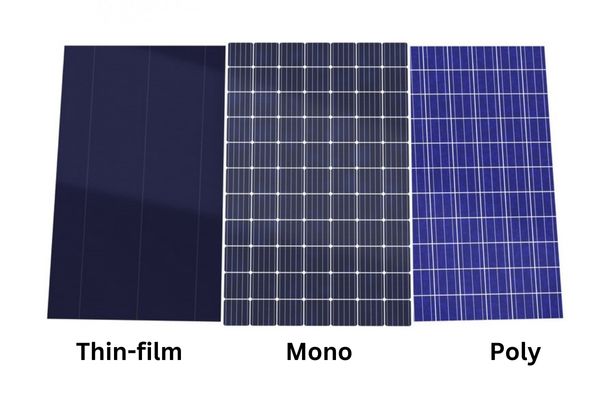
● Monocrystalline: The “mono” refers to the fact that these solar cells feature a structure with a singular silicon crystal base – essentially being manufactured using one of the purest forms of silicon available. These solar panels are the most efficient on the market, but because of their high-intensive manufacturing process, they cost more than polycrystalline or thin-film panels.
● Polycrystalline: You have probably seen these common solar panels, they are easily distinguishable from their monocrystalline cousins due to their classic blue appearance. Made using a collection of silicon crystals, as opposed to the single silicon structure of monocrystalline. These panels are the mid-range offering, and have a lower efficiency rating compared to momocrystalline panels.
● Thin-Film: Thin-film panels are considered the lowest-cost option for solar panel systems. They have a lower efficiency rating compared to crystalline panels, but make up for this with their decreased price points. Thin-film panels are available in four different options: Gallium Arsenide, Amorphous Silicon, Copper Indium Gallium Selenide, and Cadmium Telluride. These solar panels typically require more maintenance than other options, and because of their lower efficiency levels, a thin-film system will require more actual panels than a system that utilizes crystalline paneling.
Solar Cell Technologies
Solar cell technology has advanced since the early days of the industry, and now there are four main types of cells available for both commercial solar energy systems and solar energy systems for home properties.
● IBC Cells: Otherwise known as Interdigitated Back Contact cells, are known as the ultra-efficient cell option, with efficiency ratings commonly nearing upwards of 29%. Because they don’t utilize metal ribbons to fasten the cell onto the panel, they can absorb more sunlight (thus leading to higher efficiency).
● PERC Cells: PERC stands for Passivated Emitter and Rear Contact. They feature an additional layer of paneling beneath the first panel, which allows for a greater potential of capturing more of the sun’s rays. The second layer also serves an additional purpose – it prevents the aluminum backing of the panel from generating heat which can lower efficiency.
● HJT Cells: Heterojunction cells feature polycrystalline technology coupled with thin-film paneling, where the main crystalline silicon layer is placed between additional layers of silicon which can help the panel absorb more sunlight. 25% efficiency ratings and up are common for HJT cells.
● Half-Cut: These cells are unique in that during the manufacturing process, the cells are divided into two, which doubles the number of total cells on one panel. The way these cells generate efficiency is by reducing the amount of distance that energy needs to travel between cells. These panels also feature a higher resistance to heat than other types of panels.
To install a highly efficient solar panel system, click here for more information.
Sun Hours
Irradiance, commonly referred to as sun hours, is a major factor in how efficient a solar panel system will be. Simply put, the higher the level of irradiance (or the more sun hours a system receives), the higher amount of power it will be able to generate. Different states in Australia are shined with different lengths of sunlight. Check out Average Peak Sun Hours in Australia by State to find out the sun hours in your region.
Working Temperature
Believe it or not, there is an optimal temperature range for solar panels. Contrary to popular belief, a solar panel system won’t operate at peak efficiency in an extreme-heat environment. In fact, lower temperatures often predicate a system delivering more power at better efficiency levels. If the temperature is too hot or too high, the efficiency of a system starts to deteriorate. Once a panel is exposed to temperatures beyond 25°C, its efficiency will start to lower as the temperature increases. Panels will include specific efficiency details regarding temperature in their included documentation.
Shading
This should go without saying, but the more exposed a solar panel is to shading, the less effective it will be. Panels operate their best in high-sun environments, and if they are placed in an area with excessive shading, tree coverage, or clouds, their efficiency will decrease. However, inverters such as microinverters and string inverters can diminish the influence of shading to some extent. Check out “Do solar panels work when there’s shade?” for more.
Angles Against the Sun
One of the more overlooked aspects of installing a solar system is the angle that the panels are positioned. It’s important to ensure that your panels are positioned in an area that has maximum sun exposure for your area of the world, as well as using the right “tilt” – a 20-degree angle is the usual recommended tilt angle for maximum sun exposure.
How Efficient Are Solar Panels in 2022?
The solar panel and solar energy storage systems industries have come a long way since their early days. Users enjoy more efficient systems than ever before and access to a wider range of products than ever available. But how efficient are they in 2022?
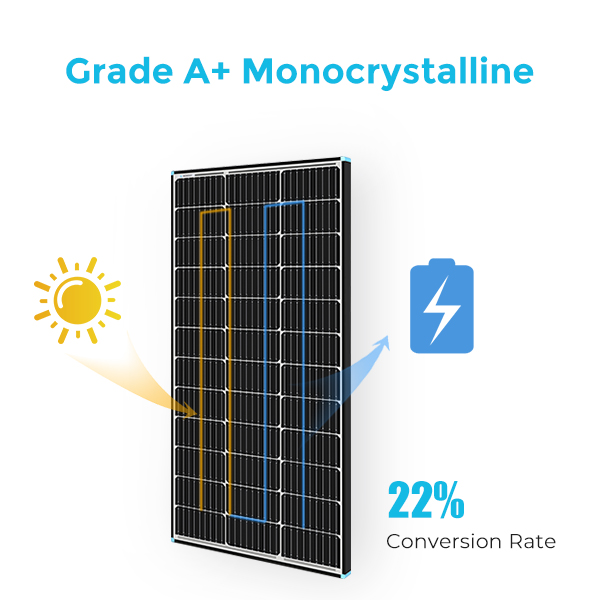
The average solar system of today has an efficiency rating of at least 20% – even in the past few years, this number was only at 15%. The industry is constantly making new strides and developing cutting-edge technologies that increase efficiency.
What about how solar panel efficiency is measured? The efficiency of a solar panel is determined by taking the flux radiation level, the panel’s area size, and the total power of the panel, and multiplying these figures by 100. When testing a solar panel, users and manufacturers use a flux radiation level of 1,000 watts (per square meter).
Do solar panels lose efficiency over time?
The average lifespan for a solar panel system ranges between 20 to 30 years. Near the end of a panel’s life, its efficiency will have been reduced by about 12% or 15% – this means that solar panels, on average, lose about 0.5% efficiency per year.
FAQ
What does 20% efficiency on a solar panel mean?
A 20% efficiency rating on a solar panel means that the solar panel is able to convert 20% of the raw solar power it collects into usable energy.
What is the typical efficiency of a solar panel?
In modern times, efficiency ratings fall around 20% for most leading solar panel brands and products.
Will solar panels ever reach 50% or 90% efficiency?
50% solar efficiency has been achieved. But it is still a long way to commercialize due to all kinds of technological limitations. It is difficult to say whether or not solar panels will reach a 90% efficiency rating in the near future, but with the constant advancements in PV technology being uncovered on a near-daily basis the future is very bright for solar panel efficiency technology.
The most efficient solar panels
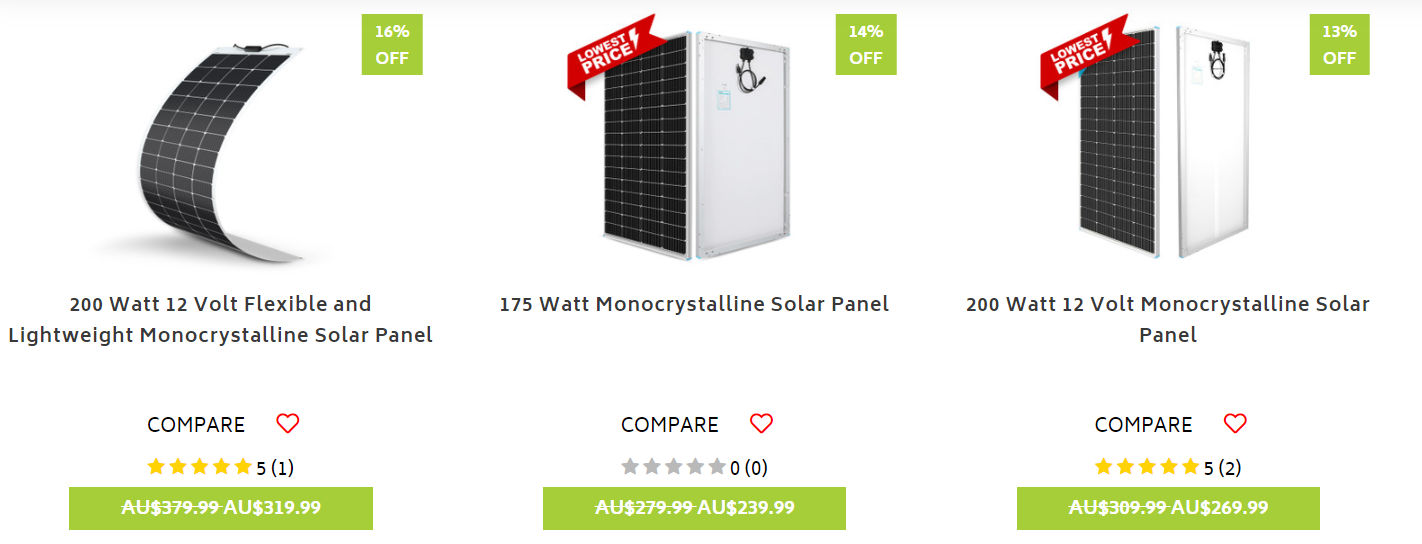
Looking for the highest efficiency solar panels available? Renogy has you covered. Our selection of premium-grade monocrystalline solar panels is unmatched and features the latest in leading-edge solar panel innovations from the industry’s best brands and manufacturers.

